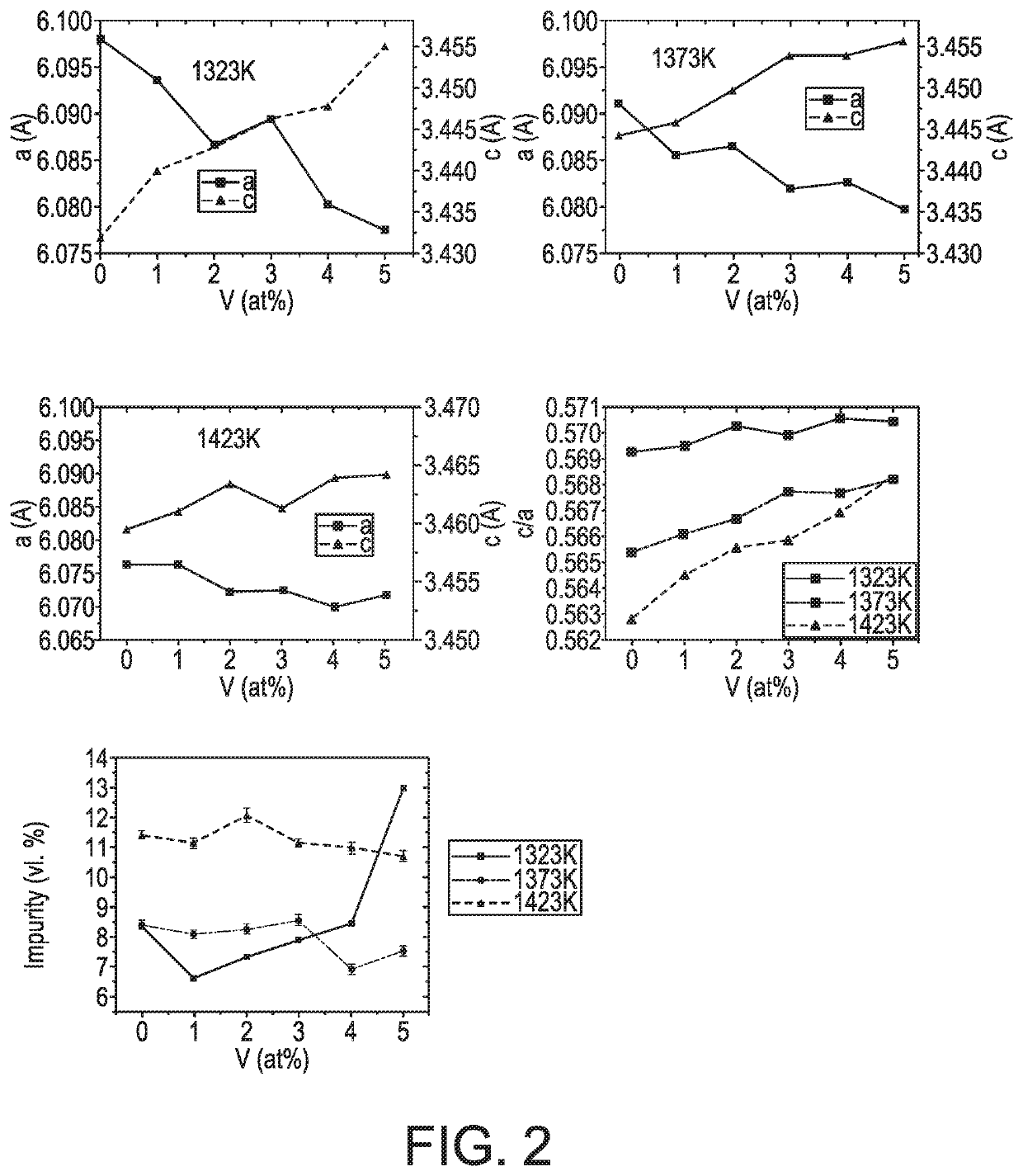Magnetocaloric effect of Mn-Fe-P-Si-B-V alloy and use thereof
- Summary
- Abstract
- Description
- Claims
- Application Information
AI Technical Summary
Benefits of technology
Problems solved by technology
Method used
Image
Examples
Embodiment Construction
[0090]Below, especially a combined effect of Annealing Temperature and Vanadium Substitution For Magnetocaloric Mn1.2-xVxFe0.75P0.5Si0.5 alloys is described.
[0091]Recently, near room temperature magnetic refrigeration technology has attracted broad attention due to its high efficiency, low impact on the environment, low noise, and long service life compared with the conventional vapor-compression technology. The giant magnetocaloric effect (GMCE) materials, which are utilized as refrigerant, form a key factor to determine the efficiency of this technology.
[0092]The magnetocaloric effect (MCE, from magnet and calorie) is a magneto-thermodynamic phenomenon in which an adiabatic temperature change or an isothermal entropy change of a magnetic material is caused by exposing the material to a changing magnetic field. The term giant magnetocaloric effect GMCE especially refers to materials that show enhanced temperature or entropy change in the vicinity of a magneto-structural or magneto-...
PUM
| Property | Measurement | Unit |
|---|---|---|
| Temperature | aaaaa | aaaaa |
| Temperature | aaaaa | aaaaa |
| Fraction | aaaaa | aaaaa |
Abstract
Description
Claims
Application Information
 Login to View More
Login to View More - R&D
- Intellectual Property
- Life Sciences
- Materials
- Tech Scout
- Unparalleled Data Quality
- Higher Quality Content
- 60% Fewer Hallucinations
Browse by: Latest US Patents, China's latest patents, Technical Efficacy Thesaurus, Application Domain, Technology Topic, Popular Technical Reports.
© 2025 PatSnap. All rights reserved.Legal|Privacy policy|Modern Slavery Act Transparency Statement|Sitemap|About US| Contact US: help@patsnap.com



